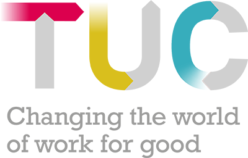As unions digitise more and more of their operations, new tech tools are becoming essential across all their functions. However, the systems used to manage membership data are still the most critical that unions rely on.
This new TUC Digital Lab report looks at Customer Relationship Management (CRM) systems from the perspective of the union movement.
CRMs are commonly used in the world of business, typically to manage customers or marketing leads. But in the union movement, their core function is to manage the union’s membership data. CRMs are sometimes called Membership Systems in the union context, but the underlying technology is still a CRM.
It’s important to note that CRMs have potential that goes beyond what traditional union Membership Systems have typically been used for. The ‘R’ in CRM stands for relationship. They are built not just to contain contact details and payments records, but to capture all aspects of the relationship the organisation has with the ‘customer’. This is often the most difficult part to implement.
There have been a lot of changes in the CRM world in recent times, especially for unions. The rise of cloud-based, Software as a Service (SaaS) offerings has fundamentally changed the CRM market. Most organisations now use cloud-based CRMs that are much easier and cheaper to get up and running than the older, in-house hosted models. New names have come to dominate the market. While many of the unions in the UK still use a traditional membership-centric CRM system, changes in commercial ownership have led to some long-established systems announcing their eventual closure.
Undertaking a change in CRM systems is a big challenge for a union. It’s difficult to underestimate the time and effort required, and there are many barriers to success.
In this report, written with Simon Parry of digital consultancy Infobo, we outline some of the key elements to consider when your union is considering embarking on a CRM change project.

